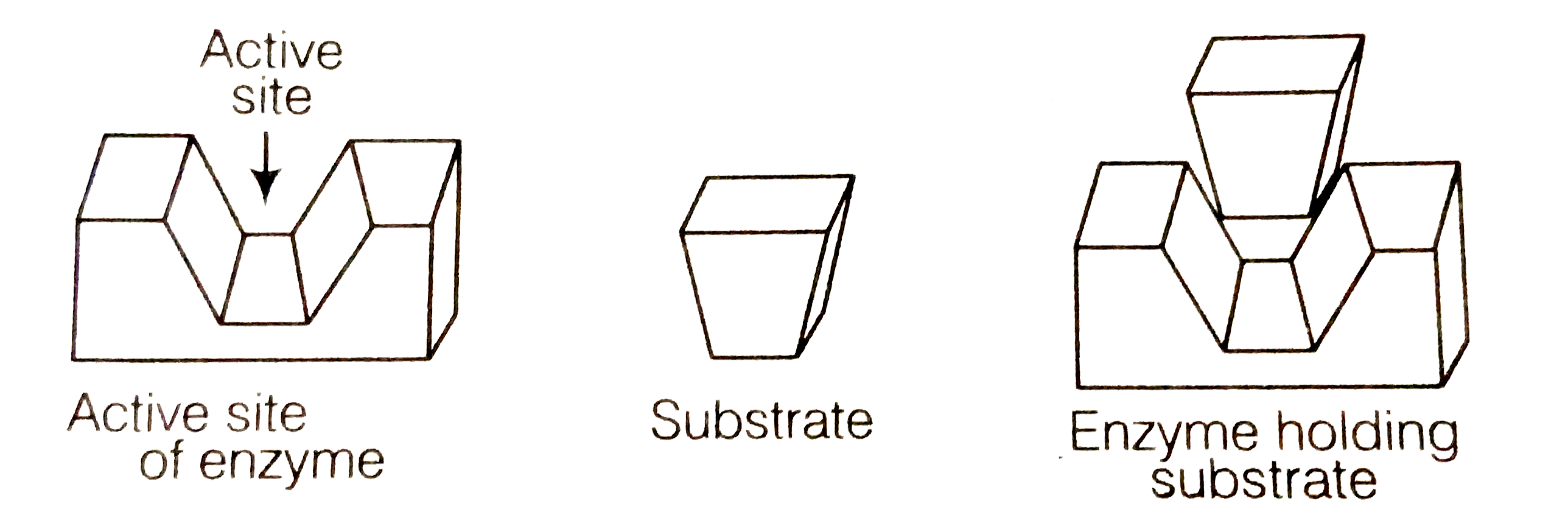How do enzymes catalyse a chemical reaction in the living system ?
Video Solution
Text Solution
In the catalytic activity, enzymes perform the following two major functions
(i) The first function of an enzyme is to hold the substrate molcule for a chemical reaction. The active sites of the enzymes hold the substrate molecule in a sultable position, so that it can be attacked by teh reagent effectively.
the substrate molecules bind to the amino acid residues of the protein present the active site of the enzyme through a variety of interactions such as hydrogen bonding. dipole-dipole intreaction, van der Waal's interactions and ionic bonding.
These binding forces shuld be strong enough to hold the substrates long enough so that the enzymes can catalyse the reaction, but weak enough to allow the products to depart after their formation.

(ii) The substrate molecules bind to the amino acid residues of the protein present on the active site of enzyme.
These provides free amino groups to attack the substrate and bring abou the chemical reaction. If the amino acid serine is present nearby the substrate held on the active site, them its-OH group is free to act as a nucleophile in the enzyme catalysed reaction.

The part of the amino acid when lies outside the box act as a nucleophile in enzyme catalysed reactions, but the part of the amino acid which is enclosed in the box is involved in the formation of peptide bond in protein molcule.
|
Topper's Solved these Questions
- CHEMISTRY IN EVERYDAY LIFEBOOK - NCERT EXEMPLAR ENGLISHCHAPTER - CHEMISTRY IN EVERYDAY LIFEEXERCISE - Assertion and Reason
14 Videos
- CHEMICAL KINETICSBOOK - NCERT EXEMPLAR ENGLISHCHAPTER - CHEMICAL KINETICSEXERCISE - LONG ANSWER TYPE QUESTIONS
5 Videos
- COORDINATION COMPOUNDSBOOK - NCERT EXEMPLAR ENGLISHCHAPTER - COORDINATION COMPOUNDSEXERCISE - Long Answer Type Question
5 Videos
Similar Questions
Knowledge Check
Enzymes in the living systems
Aprovide energyBprovide immunityCtransport oxygenDcatalyse biological reactions.An enzyme promotes a chemical reaction by
Aincreasing molecular motionBlowering the energy of activationCcausing the release of heat, which acts as a primerDchanging the free energy difference between substrate and productAn enzyme promotes a chemical reaction by
Aa) lowering the energy of activationBb) changing the free energy difference between substrate and productCc) increasing molecular motionDd) All of these
Enzymes catalyse reactions by
View SolutionEnzymes catalyse the biochemical reactions by ____ the activation energy.
View SolutionWhat do you understand by chemical reaction ?
View SolutionThe function of enzymes in the living system is to
View SolutionThe function of enzymes in the living system is to
View Solution
